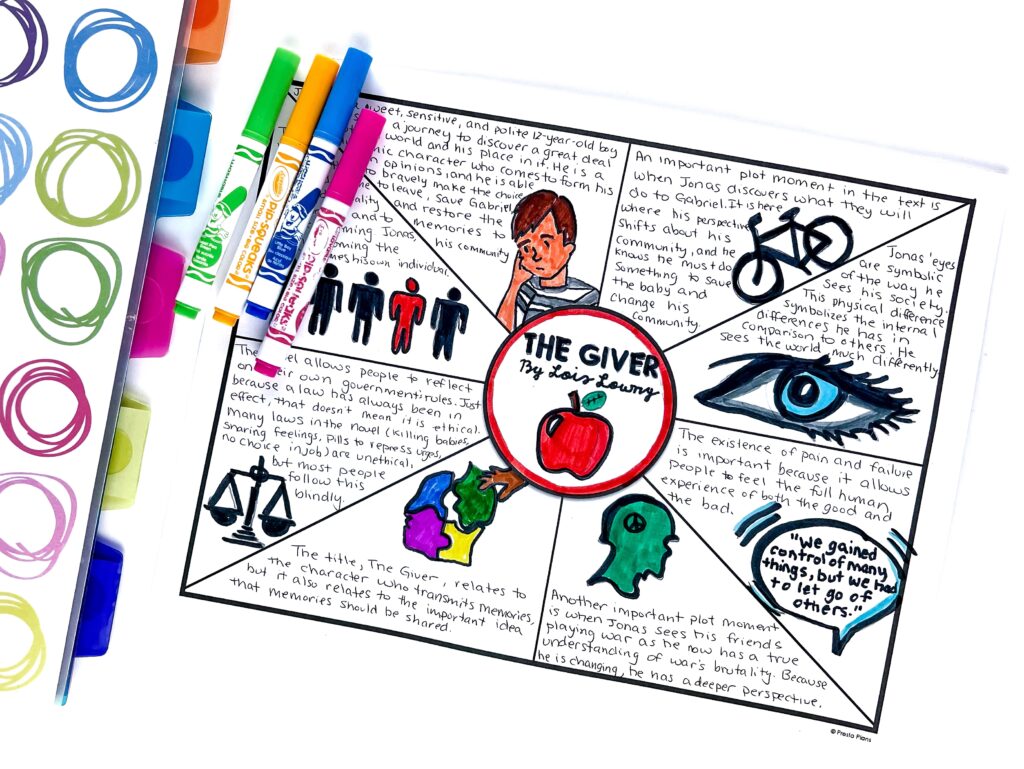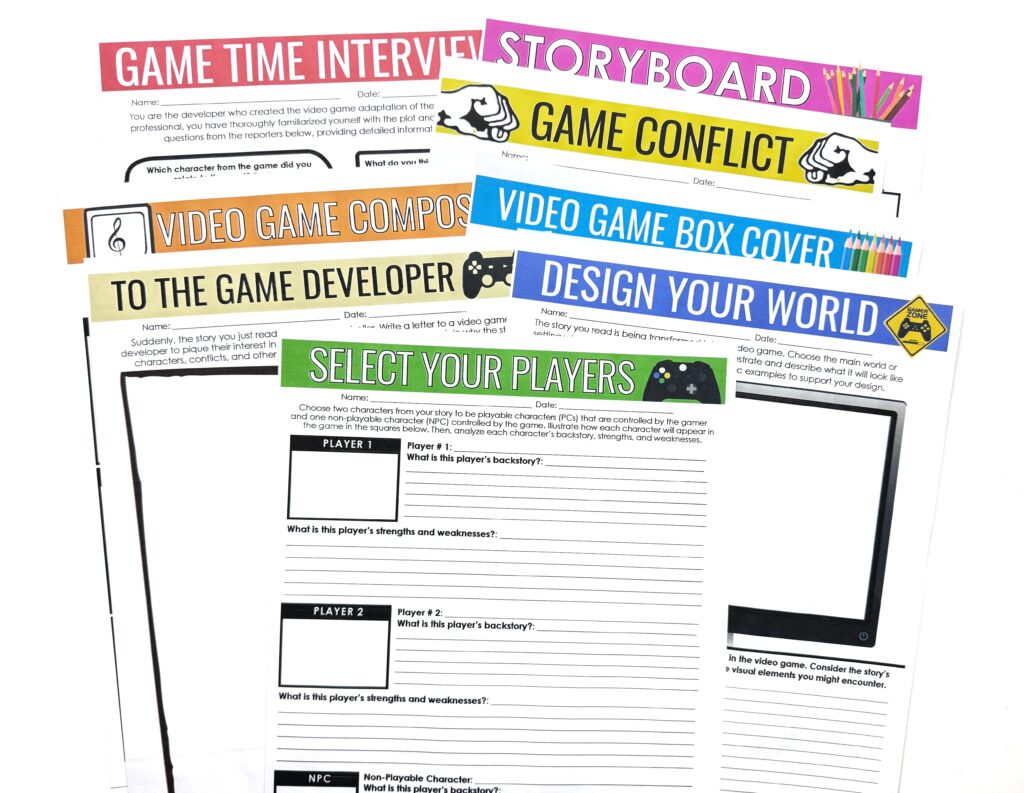PRESTO PLANS
Sent straight to your inbox
CLICK HERE TO ACCESS
Sign up to receive 10 ready-to-use ELA resources your students will love!
10 FREE ELA RESOURCES

3 Ways To Engage Reluctant Readers in Middle School ELA
One of the most common challenges I hear from middle school ELA teachers is: How can I engage reluctant readers? I totally get how tough it can be to engage reluctant readers in middle and high school ELA. In my experience, most of them eventually come around, although you might have to get creative in your approach! Over the years, I’ve picked up a few strategies and tricks to “hook” these students into reading. Here are some of my favorite tips for engaging reluctant readers.
Offer Choice and Voice
In my experience, one of the most effective ways to improve “buy-in” from reluctant readers is to offer plenty of (controlled!) choice and voice. I find that when students are able to have some control over what they are reading and how they are able to demonstrate their understanding of the text, they are more likely to be engaged with their learning.
Depending on your personal preferences, and the needs of other students in your classroom, choice, and voice related to reading can be offered in a few different ways.
CHOICE OF TASK:
If your curriculum requires (or you prefer) students to complete a whole-class novel study on a specific text, there are still ways to incorporate student choices into reading. For example, you might offer a selection of prompts for students to choose from when composing a reader’s response.
As a culminating activity, another option is to provide students with a “menu” of creative activities to choose from to demonstrate their understanding of any text. This can be especially appealing for students who like to “show” what they know in unconventional ways, such as designing or inventing a product, or through visual arts.

CHOICE OF TEXT:
If you have students reading at a variety of different levels and paces in your classroom, another way to accommodate student choice is by offering them a selection of texts to engage with. One of my very favorite activities to engage reluctant readers is to begin an independent or small group novel study with a “book tasting” event. Here, I like to set up the room so that students can cycle through “stations” and explore a variety of novels.
At each station, I give them time to examine copies of a featured book and explore the front and back cover. Many students like to flip through the books to determine the length of each chapter and maybe even read the first couple of pages! Once students have rotated through all the stations, I ask them to rank the novels in order of personal preference. Finally, I assign a book to each student, based on their input, as well as available materials and other considerations (like “good fit” group members!).
You might even like to expand on this idea with a completely independent reading task. If you take this approach, you might want to begin with a trip to the school library. Here, students can freely browse for an appealing book, which they will then read independently. As they read, you might like to have all students complete a flexible reading comprehension task that can be adapted to nearly any text! For example, I love having students keep an interactive notebook as they read. For a wrap-up assignment, Fiction One-Pagers provide plenty of structure but are flexible enough to work with almost any novel or short story.

Lean Into Students’ Interests
So your student says they’re “not a reader” (yet!). That’s OK! One of my tried-but-true strategies is to meet statements like this with acceptance and curiosity. I like to respond by saying something like, “Well, what ARE you interested in?”
Often, students’ passions include things like sports or activities like video games. Once you learn what catches your students’ interests, you have something to work with! You might have to think outside the box here. How can you connect students’ interests to reading?
READ ABOUT THEIR PASSIONS:
If your curriculum includes nonfiction passages, this can be a great way to engage a reluctant reader. For example, if your student really loves LEGO, you might want to provide them with some articles to explore about the history of LEGO or modern LEGO designers. Gamers might enjoy nonfiction articles and activities related to the world of video game competitions. Dog lovers could be engaged with articles about dog training or animal heroes, and of course, there’s no shortage of sports articles for your athletes!

MAKE CONNECTIONS:
You can also incorporate students’ interests by encouraging them to connect reading activities to hobbies or interests they have outside of the classroom. I find that many reluctant readers are (pleasantly) surprised when they can see the link between literary elements in ELA and video game design!
One learning activity that hooks many reluctant readers is Turn A Short Story Into A Video Game. This engaging project, which is adaptable enough to work with most short stories, invites students to turn their ELA reading into an immersive video game. As students complete tasks involving cover design, storyboarding, and even selecting a soundtrack, they also hone their literary analysis skills and practice supporting their ideas with evidence from the text.

Build a “Culture of Reading”
When it comes to strategies to engage reluctant readers, remember that you’re in it for the long haul. It’s not reasonable – or realistic! – to expect that one “magical” lesson will create buy-in and engagement all year long. However, by taking a slow and steady approach, you can move a culture of reading forward in your classroom.
CREATE A DAILY READING HABIT:
From the beginning of the school year or a new term, I like to look for regular, low-pressure ways to incorporate daily reading – even for just a few minutes. Bell-ringers are a great way to set the tone for reading. I often begin by using bell ringers to reinforce and support reading strategies like making inferences, summarizing, and identifying the main idea in a passage of text. From here, I might keep the practice of daily bell-ringers to build essential ELA reading and writing skills and add an additional five or ten minutes of independent or guided reading a few times a week. This can help students build stamina as readers.

KEEP READING FUN!:
Finally, I think it’s really important to model reading for pleasure to your students and to encourage them to discuss books with each other. I love weekly routines like First Chapter Friday, where the teacher reads the first chapter of an unfamiliar, high-interest book to the class. (I especially love when students can enter their names into a draw to be the first to sign the book out of the library!).
Likewise, student-led activities, like Online Date With a Book, can encourage students to think outside the box and engage with literature in fun new ways! I actually love this activity so much that I wrote an entire blog post about it – trust me, it’s a blast!

I hope this post gave you some fresh ideas to engage reluctant readers in your middle or high ELA class. Winning them over isn’t easy – remember that it’s a marathon, not a sprint – but little victories can be so rewarding!
Looking for more engaging ideas to teach reading in middle school ELA? Check out my post on 5 Awesome Books For Your Next Middle School Novel Study! You can some of the ready-to-use resources mentioned in this post below:








Search the blog for what you are teaching
GIVEAWAYS
sent straight to your inbox!
share this post